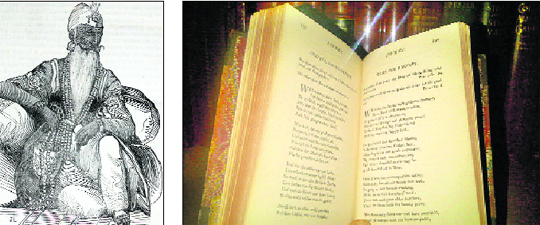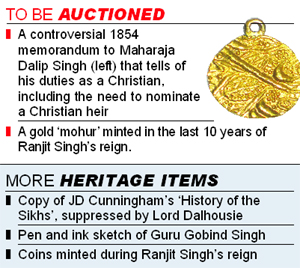 Sikhs guarding Chinese cemetery since 1930’sChina: For nearly 70 years, two statues of Sikh guards have stood faithfully over Qing Dynasty magistrate Chew Gek Leng’s grave. The brightly coloured pair are a familiar sight to visitors to Bukit Brown Cemetery, off Sime Road.
Sikhs guarding Chinese cemetery since 1930’sChina: For nearly 70 years, two statues of Sikh guards have stood faithfully over Qing Dynasty magistrate Chew Gek Leng’s grave. The brightly coloured pair are a familiar sight to visitors to Bukit Brown Cemetery, off Sime Road.Foreigners take pictures of them. Punters seek 4-D numbers from them. Except for a new paint job every two years, the pair have lasted their long vigil mostly unscathed.
Until now.
On 28 Mar, when Mr Chew’s oldest grandson, Mr James Chew, 68, a retired bank officer, went with his sister to visit the grave during the Qing Ming Festival, he found to his horror that the noses of both statues were broken.
The sentry on the left, which has the Chinese words for ‘house guard’ painted on it, also had the top of its rifle broken. (The other guard is labelled ‘patrol’).
It is a popular grave, and there are no shortage of gawkers, which Mr Chew does not mind. But he said: ‘Take pictures, but please don’t take away a piece of the grave’.
It is not known if the damage was the work of vandals.
The 1.5m-tall, splendidly uniformed duo with bushy black beards and bright red turbans are an arresting sight amid the grey headstones and green foliage of the graveyard. These statues even come with a guard dog each, which lies by the butt of each rifle.
Mr Chew called the statues ‘a landmark’ among visitors, and he wasn’t exaggerating.
Though rainclouds cut short the time The New Paper spent at the tomb on Good Friday with Mr Chew, at least two family groups stood and looked at the statues during the one-hour period.
One woman, who declined to be named, said: ‘We recognise these two statues. We see them, then we know how to go (to the grave we are visiting).
‘Everyone knows the guards.’
The grave is now looked after by the third generation of a family of grave caretakers.
People come to pay respects
One of them is Madam Queenie Quek, 49. Her grandmother first looked after the grave, then her mother, and now her.
Her face lit up when she saw Mr Chew, and she quickly came down with a Chinese paintbrush to ask him to draw pupils on the Sikh statues’ eyes, which had been painted white.
Mr Chew joked as he painted: ‘Otherwise, they’re blind.’
Madam Quek said that during Qing Ming Festival and the Hungry Ghost Festival, officials from various temples around Singapore will come to pay their respects, offering tea and burning incense.
‘Maybe it’s because he’s a magistrate, and they found out that he was a major official?’ said Madam Quek.
Her sister-in-law, Madam Oh Kim Gek, 53, has been looking after the grave for 30 years.
As for the damage, she suspects that it was a lorry that caused it since they stood by the road.
But who was Mr Chew Gek Leng, who died in 1940, and why does he, a Chinese immigrant, have statues of Indian soldiers at his grave?
Mr James Chew said his grandfather fled to Singapore from China after the fall of the Qing Dynasty in 1911.
He brought his two wives, his servants and his slaves, to escape death at the hands of warlords.
He had been given Sikh guards in China, whom he did not bring along. .
As he came from five generations of physicians, he started practising medicine when he arrived, at a large house near Jalan Eunos.
The grave that he was entombed in was a major undertaking. The statues were made in China and the granite was also shipped over from his home country.
Before he died, he also had a large coffin stored in the house.
Mr Chew Gek Leng’s Sikh statues first made news in 1993, during the impending exhumation of graves in Bukit Brown Cemetery.
Although Mr James Chew is a practising Christian who worships at Wesley Methodist Church, he believes that it is his duty to maintain the grave of his grandfather.
But he is old. Who will take over when he is gone?
He sighs. He has two daughters, but one of them is married in Sydney, Australia. He is considering paying a temple to take over his work.
He said: ‘I’ll let the next generation decide what to do.’
with thanks : www.sikhsangat.org






















